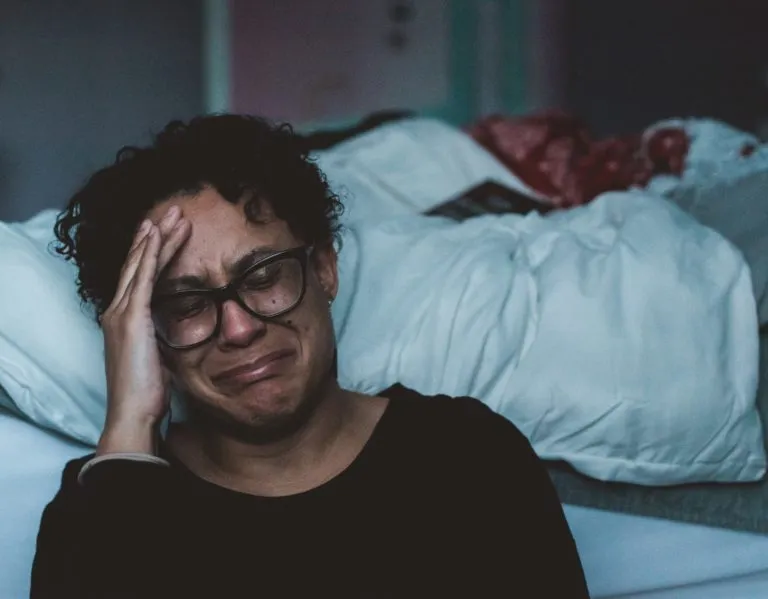International Day for the Elimination of VAWG: Links between domestic abuse and housing
Published: by Steph Kleynhans

As we mark today’s International Day for the Elimination of Violence Against Women and Girls (VAWG), we remember the plight of so many women and girls across the world who face abuse and violence every single day.
Through our services, we see the devastating impact unaffordable housing has on survivors trying to leave an abuser. Having access to an alternative safe, affordable and suitable home can be the difference between leaving and surviving an abusive relationship, and having to endure further abuse or even face being killed.
Some 70% of women killed by men from 2009–2018 were killed in their own home or the home they shared with the perpetrator.
Anything that prevents women from being able to remove themselves from an abusive home, and find an affordable and safe new home, is a barrier to ending domestic abuse and VAWG.
Why unaffordable housing is a barrier to ending domestic abuse and VAWG
Firstly, there are just not enough truly affordable social homes available. Last year, 29,000 social homes were sold or demolished, and less than 7,000 were built. We are in a social housing deficit. But demand is astronomical, with over one million households waiting for these homes. Millions of people have been forced to seek alternatives in the unaffordable private rental sector. And with a welfare safety net that isn’t fit for purpose, they often struggle to afford a new home.
Secondly, there is a severe lack of refuge space across England. Spaces are 30% below the recommended level, according to the Council of Europe, and 57% of referrals to refuges were declined in 2019–20. Women’s Aid found that just under 40% of women they supported in 2019/20, who struggled to access refuge space, were forced to sofa-surf or sleep rough while they waited.
Finally, welfare restrictions worsen the affordability crisis for lone-parent families – the vast majority of whom are women. Two particular examples of this are the household benefit cap and the two-child limit:
-
the benefit cap limits the amount of benefits you can receive if you do not work above a certain number of hours
-
the two-child limit prevents families from receiving certain child-related benefits for more than two children
Both of these measures can help perpetrators to increase their financial control over women.
In the case of the benefit cap, leaving a perpetrator often means going from being a coupled household to a lone-parent household at greater risk of their income being capped. For example, if the survivor isn’t working the required hours, or has to leave their work in order to escape the abuser by moving to a different area, it can also mean going from being a ‘working household’ where they aren’t subject to the cap, to an ‘out-of-work household’ where they are subject to the cap. Many survivors would be subject to the cap because their abusers do not let them work. This is a typical form of economic abuse. One woman described their experience of the benefit cap to Women’s Aid:
The benefit cap and the spare room subsidy both indirectly kept me with him for much longer than I wanted to stay.
ANONYMOUS
Similarly, the two-child limit can play into the hands of abusers. Some perpetrators use sexual abuse, as well as control of women’s reproduction, to create financial dependence. The two-child limit means that women will really struggle to cover the costs of caring for more than two children if they escape the abuse. We know from frontline staff at Refuge that this leaves ‘some women [being] pressured into having more children and becoming financially reliant on their partners for support’.
And while there is a ‘non-consensual conception exemption’ if a third child was conceived due to rape, Women’s Aid warns that ‘this does not reflect survivors’ lived experience of disclosing domestic abuse and rape’. Many women are too fearful of the repercussions of reporting rape or sexual abuse.
How can the government help?
- Invest in social housing
One of the biggest barriers to eliminating VAWG is the lack of genuinely affordable homes for survivors of domestic abuse. Women leaving abusive relationships must be able to access safe, affordable and suitable homes.
If the government is serious about ending domestic abuse, it must urgently invest in genuinely affordable, social housing across the country.
- Scrap the household benefit cap
There is no doubt that inadequate housing benefit and inadequate child welfare payments cause poverty and hardship for the hundreds of thousands of households they affect. But for women, and particularly those impacted by domestic abuse and other forms of VAWG, it is even more punishing**.** These policies can actively stop women from leaving a perpetrator**.**
On this Elimination of Violence against Women and Girls Day, the government must recognise that the benefit cap prevents women from safely leaving abusive relationships and scrap it immediately.